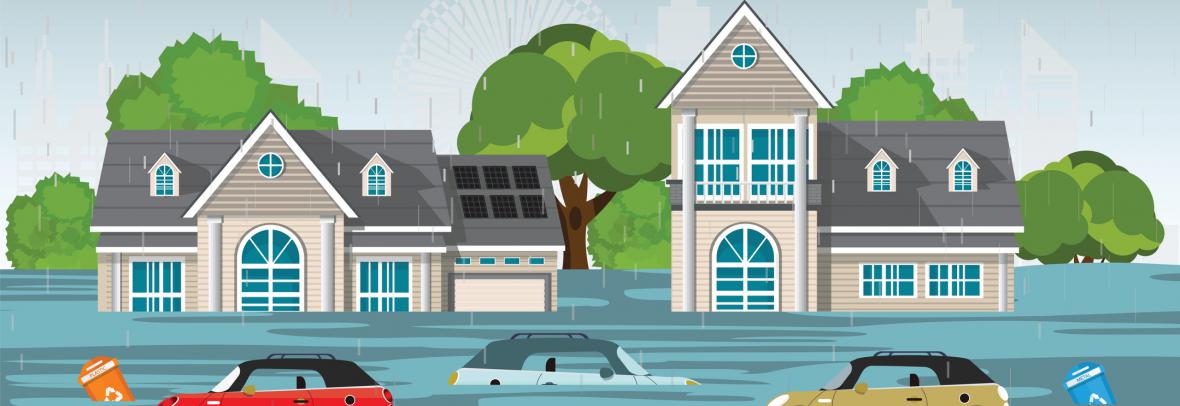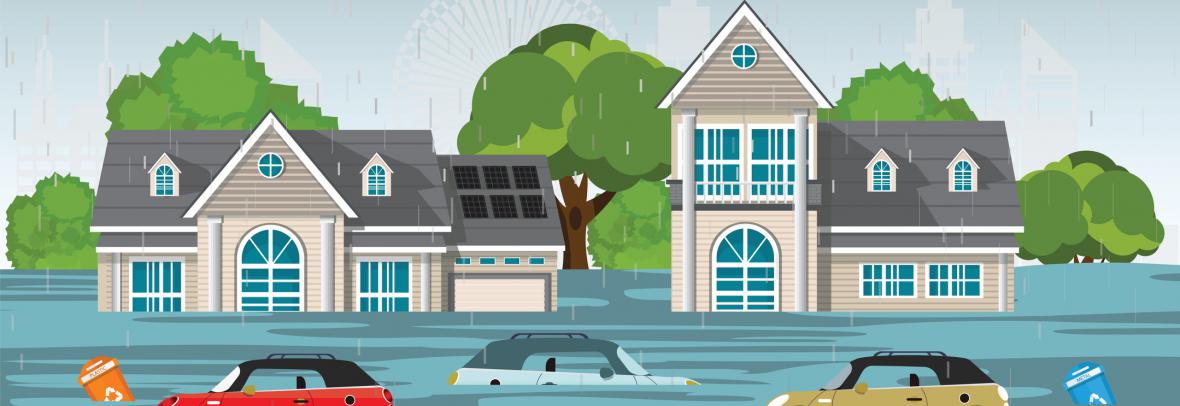
FEMA did not release a tool to answer the question on most Fla. homeowners minds: “Will my flood insurance rate go up or down?” But overall, it says 1 out of 5 residents (19.8%) will see a reduction, and 3 out of 4 (76%) won’t see a change higher than $120 more per year.
ORLANDO, Fla. – The Federal Emergency Management Agency’s (FEMA) announced an overview of flood insurance premium rate increases – Risk Rating 2.0: Equity in Action, part of the National Flood Insurance Program (NFIP) – that will go into effect on Oct. 1, 2021.
The announcement doesn’t answer a question on many Florida homeowners minds: “How much more will flood insurance cost for my home?” Or, alternately, “How much might I save?”
However, it provides an overview of the changes Floridians can expect, and one out of five Florida homeowners (19.8%) should see a decrease in their yearly NFIP cost. One out of 25 (4.2%), however, should see a yearly rate increase greater than $240.
But even that increase doesn’t paint a clear picture for current homeowners with NFIP coverage. Policy costs often go up when renewed, and the 2.0 yearly increase of $120 could actually be less than they’d pay without a pricing structure change.
A PDF overview of Risk Rating 2.0’s impact on Florida is posted on FEMA’s website.
FEMA’s expected changes in Florida flood insurance costs per year
- 19.8%: Lower flood insurance costs
- 68.1%: Either no change or a yearly increase less than $120
- 7.8%: A premium increase between $120 and $240 per year
- 4.2%: A premium increase greater than $240 per year
FEMA also says homebuyers don’t have to suffer sticker shock after closing. It plans to include the current elements of NFIP coverage in its new plan:
- Over time, most rates won’t increase more than statutory limits of 18% per year
- Flood mapping will continue because FEMA uses it for its catastrophe models under Risk Rating 2.0 and mandatory building requirements in hazard areas. Most mortgage lenders will also continue to require buyers of flood-zone properties to have flood insurance.
- FEMA says it will still offer “premium discounts for Pre-FIRM subsidized, newly mapped and continuous coverage grandfathering.”
- NFIP coverage can still be transferred (including any discounts) from a seller to a buyer when a home sells
- Residents of communities that mitigate flood risks under FEMA’s Community Rating System will continue to receive discounted rates.
When is FEMA doing this?
Phase I: Starting on Oct. 1, 2021, new policies will be subject to the 2.0 rating method. At the same time, existing policyholders eligible for renewal will be able to take advantage of immediate decreases in their premiums.
Phase II: All NFIP policies not included in Phase I will be subject to the new rating method on or after April 1, 2022.
Why is FEMA doing this?
Since the 1970s, a home’s flood insurance cost was based on its elevation and zone within a FEMA Flood Insurance Rate Map (FIRM). FEMA says a one-size-fits-all rate policy means that “policyholders with higher-valued homes are paying less than their share of the risk,” and “policyholders with lower-valued homes are paying more than their share of the risk.”
FEMA calls Risk Rating 2.0 a “transformational leap forward” because it will work similar to existing property insurance policies in which every homeowner receives an individualized price quote.
In addition to elevation and flood zone, FEMA says a 2.0 coverage quote will also consider “flood frequency, multiple flood types – river overflow, storm surge, coastal erosion and heavy rainfall – and distance to a water source, along with property characteristics such as elevation and the cost to rebuild. … FEMA is building on years of investment in flood hazard information by incorporating private sector data sets, catastrophe models and evolving actuarial science.”
“The new pricing methodology is the right thing to do,” Senior Executive of NFIP David Maurstad said in a statement announcing the update. “It mitigates risk, delivers equitable rates and advances the agency’s goal to reduce suffering after flooding disasters. Equity in Action is the generational change we need to spur action now.”
© 2021 Florida Realtors®
Go to Source
Author: kerrys



